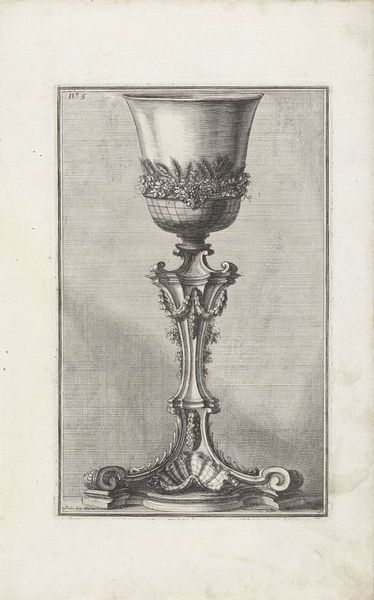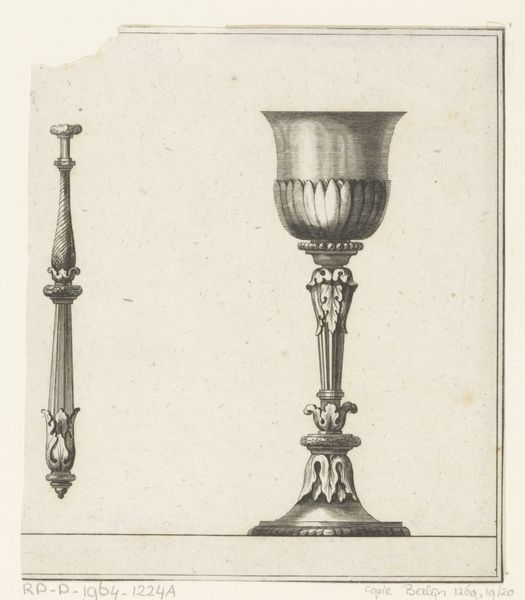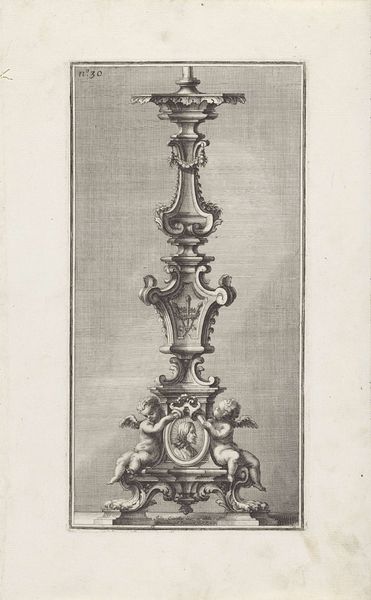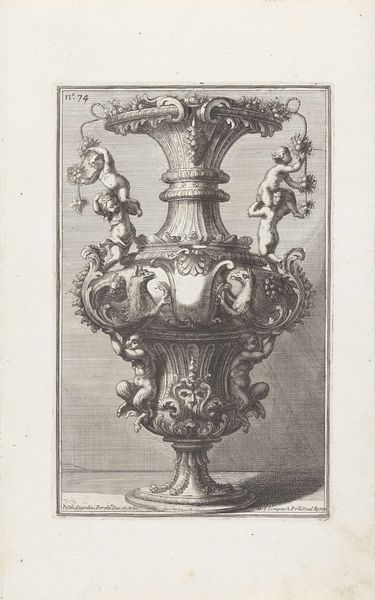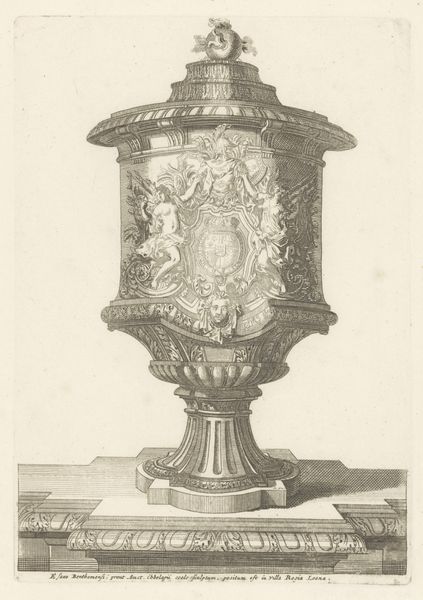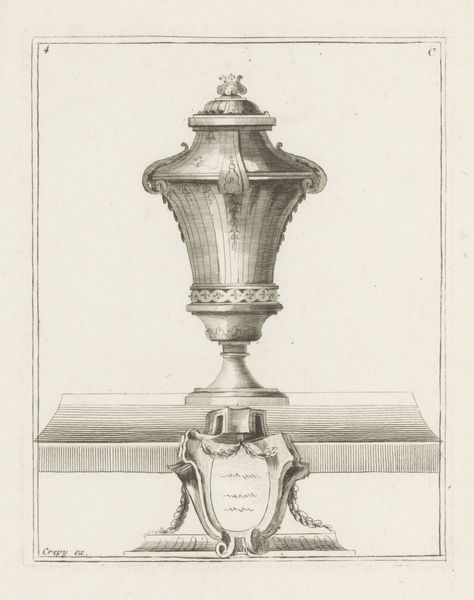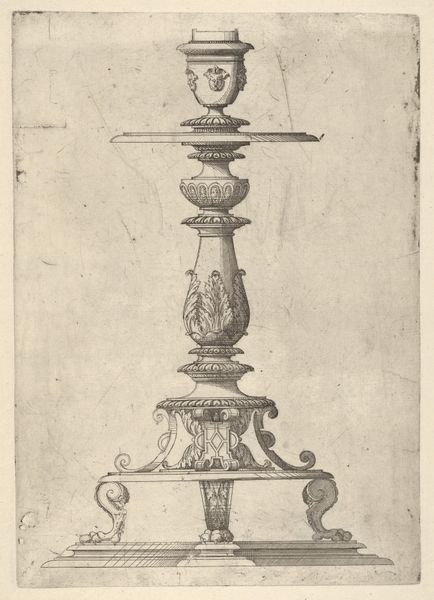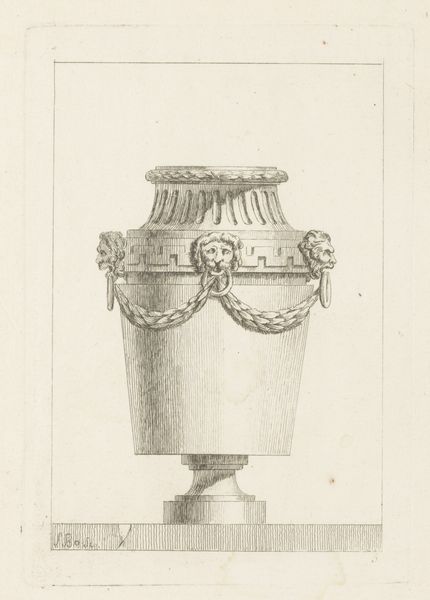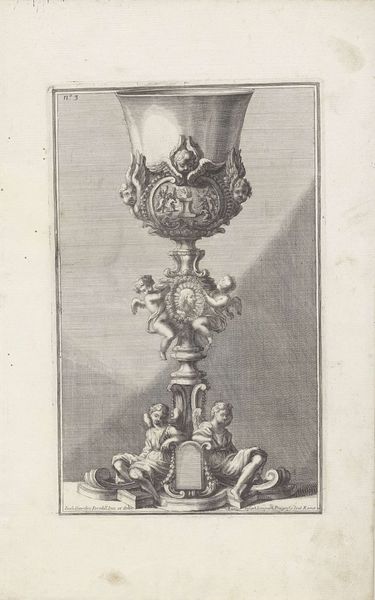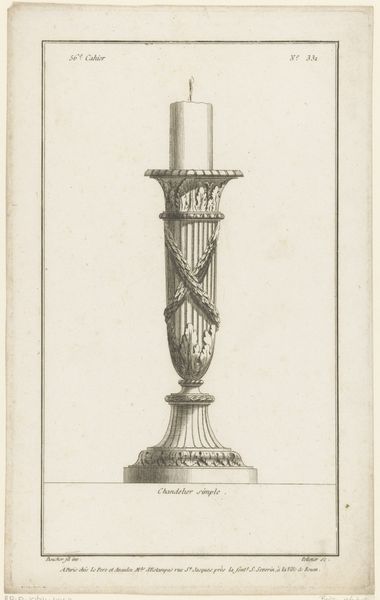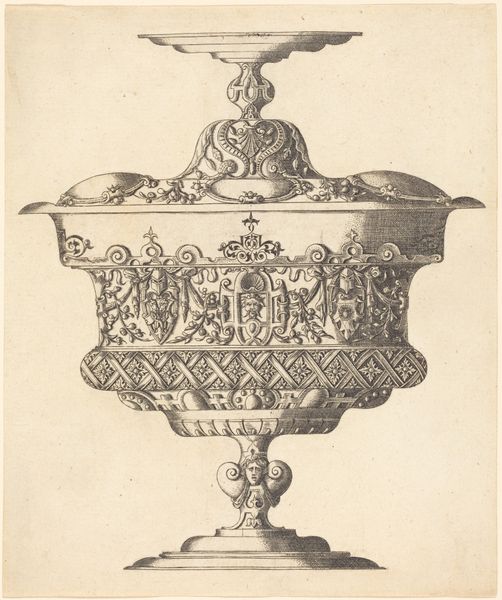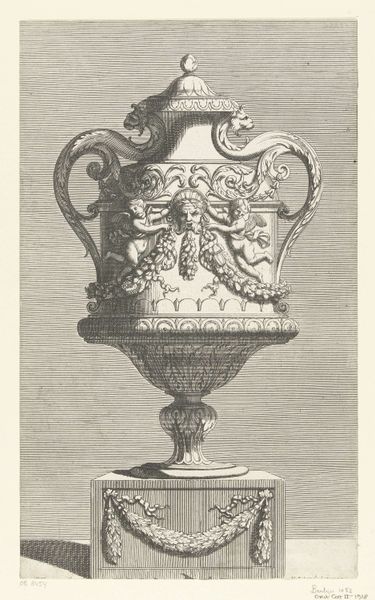
drawing, print, pen, engraving
#
pencil drawn
#
drawing
#
baroque
# print
#
pencil sketch
#
old engraving style
#
form
#
pencil drawing
#
geometric
#
line
#
pen
#
engraving
Dimensions: height 275 mm, width 174 mm
Copyright: Rijks Museum: Open Domain
Curator: Standing before us is "Kelk," a print executed around 1714 by Maximilian Joseph Limpach. It’s currently held in the collection of the Rijksmuseum. Editor: Immediately, I'm struck by the stark, almost ethereal quality of the piece. The crisp lines create a strong sense of form, yet the delicate shading lends it an ephemeral feeling. Curator: Indeed, and that very sense of form speaks to its function. These prints were never intended to be artworks in themselves but models, made to spread knowledge of contemporary style amongst craftsmen across Europe, setting a stylistic template for the wealthy clientele that wanted to show off their sophisticated taste. Editor: Ah, that contextualises its slightly austere precision. But, focusing on the visual elements, the baroque influence is apparent in the complex, curvilinear details of the cup. There’s a rhythmic repetition of forms from the base to the lip, creating a visual harmony. The artist employs hatching and cross-hatching to articulate volume and texture. Curator: Right. Limpach's Kelk offers us a clear insight into the dissemination of artistic trends, revealing how visual ideas could leap geographical divides. Prints like this democratized design, if only for those who had the disposable income for finely crafted goods. It underscores the interconnectedness of early modern Europe, at least among elites and artisans. Editor: It is also, viewed in isolation, a compelling example of line art. I love the sense of depth he creates with minimal tonal variation. The artist demonstrates mastery of form through meticulous details and fine tonal gradation achieved through skillful pen work. Curator: Its success also underscores the patronage system of the era; somebody needed to be able to pay Limpach to draw these cups in the first place, for there to even be a 'Kelk' at all. Without commissions, we wouldn't be admiring it today. It speaks to how dependent art can be on wealthy sponsors and its use for projecting status. Editor: Absolutely, and I’m especially drawn to how the artist manipulated line weight to define contours and capture subtle nuances of light. It’s an intriguing dance between representation and abstraction. Ultimately, this close study brings one face-to-face with fundamental artistic processes. Curator: From a historical standpoint, this gives us such an invaluable keyhole into the 18th-century aesthetic, reminding us art is so often linked to economic factors, commercial exchange and aspirational identity.
Comments
No comments
Be the first to comment and join the conversation on the ultimate creative platform.
